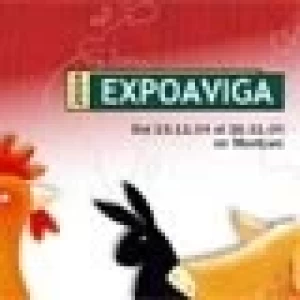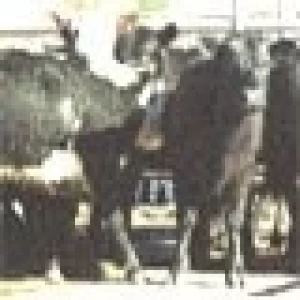SOUTH AMERICA / A WORLD OF OPPORTUNITIES

While this description to a certain extent rings true, it is not particularly helpful for the overseas stakeholder who is considering South America as an interesting market to buy from, or sell to, for that matter.First of all, South America is a huge geographical region, comprising the countries (starting from the Southern tip to the north), Chile, Argentina, Uruguay, Paraguay, Brazil, Bolivia, Peru, Ecuador, Colombia, Venezuela, Guyana, Surinam and French Guiana.The climate varies from tropical to Antarctic, with the Amazon, the Pantanal, the Pampas and the Andean plains as distinct ecological, cultural and economical regions.Politically the region has gone through a spectacular transformation, where 20 years ago it was all civil war and military dictatorships, there is now democratic institutions, integrated development planning, dialogue and consensus building. More pragmatism and less bravado in other words.Obviously some are more advanced than others and far from all problems have been solved. Poverty is still a tragic fact, and tensions can still run high as seen by recent events in the Andean and Caribbean regions, but despite the shortcomings and conflicts, democracy prevails and civil rights develop accordingly. All of the regions’ countries have singled out their agricultural and food producing sectors as important strategic growth sectors, and have thus acted to combat animal and plant health problems that were the foremost impediments to free trade.On the Southern Cone, Argentina, Brazil, Chile and Uruguay – which I will focus specifically on here – authorities have worked hard to contain and eradicate Foot and Mouth Disease, the last outbreak in 2001 (Argentina, Brazil and Uruguay) left the region’s meat industry gutted and with a serious credibility problem. Much has changed since then, vaccination programs are back in use, cattle producers and slaughterhouse owners cooperate to ensure that there is full compliance with FMD measures, and on government levels stringent bio security measures have been developed and implemented to keep the FMD virus under control. In particular regions where previous outbreaks have occurred, epidemiological surveillance has been reinforced with border patrols and specially trained animal health workers who cooperate with local cattle producers to further strengthen compliance.All of this has since long paid off and the countries that were affected by the 2001 outbreak have been declared free of FMD and have for the most part recovered markets they were banned from at the top of the crisis.But the Southern Cone countries offer more than just beef. Chile and Brazil have since long been exporting pork and poultry, while in Argentina these two industries are just starting to take off. The Argentine stakeholders in these two sectors have worked tirelessly to get rid of Classical Swine Fever and Newcastle disease respectively while at the same time investing in genetics and technology and are already gaining access to new markets.Brazil is a world unto itself, being one of the biggest markets in the world.In general, the federal agricultural services with its agency – EMBRAPA – provide state of the art science and resources, while private sector stakeholders are very quick to invest and develop the concepts.Chile did successfully negotiate unilaterally with the US and the EU and won some very handsome trade accords for it, pending the implementation of upgraded quality management protocols. This has taken the form of the PABCO schemes, Agricultural Holdings Under Official Control. The scope of this scheme is, in addition to the usual animal health controls, is to increase quality management in all separate processes from farm to slaughterhouse, while obviously afterwards following up with post-harvest quality management.These schemes have been well received among Chilean producers, who feel that this voluntary approach allows each farmer, whether producing for export markets or for internal markets, to improve his own performance in a uniform system. Clearly, the effect in the long term would be that as more and more producers enter the scheme, quality levels nationwide would improve and allow for a bigger pool of potential exporters. This is indeed the strategy of Chilean authorities, who seek to expand the agro-sector by some 25% by 2010 (strategic plan 2000 – 2010).Uruguay too has taken the bold strategic decision to grow is agro-sector in the wake of the devastating economic and social crisis that ripped through the region between 1998 – 2002. Starting in 2003, Uruguayan agricultural authorities kicked off a series of initiatives aimed at raising the floor in food safety and quality. Measures have included ministry sponsored training activities of animal health personnel, farmers and slaughterhouse industry stakeholders. Industry stakeholders on their side have met to debate the real needs of the Uruguayan food industry, and slowly but steadily worked to implement the recommendations. With the development of their own national brand Natural Meat Uruguay, complete with certification protocols and co-branding with the USDA Process Verified Program for its cattle and lamb meat products. This has resulted in access to new and better markets, and Uruguayans are now exporting almost to the top of their capacity.Argentina is a more complex case. The country only recently formally ended the stifling economic crisis by finding a way out of its defaulted debt problem. With the defaulted bonds now successfully swapped, and with other debt burden re-structured, Argentines have a much more optimistic outlook on the future. True, the economy has grown steadily since the crash in 2001, but production levels are still not quite where they were before the onset of the recession back in ’98. Meanwhile, the internal markets are still somewhat unstable with inflation for 2005 forecasted to reach just about 10%. This has led to a situation where authorities are worried about the effect on ordinary people’s lives and have negotiated with the food sector to ensure that prices for staple products go further up. Also the highly unpopular export taxes are in place and despite calls to remove them, finance ministry officials so far keep mum on the issue, or even threaten to increase them if the sector does not improve investments.This has led to some leading economists pointing out that these taxes are a marvelous incentive to develop the food process industry here.Regardless of varying degrees of economic constraints, social issues and the capabilities of public services, this region is set for growth and welcomes foreign stakeholders to be part of the process.* Hanne Martine Stabursvik, Norwegian veterinary surgeon working and living in Argentina. Member of the Royal College of Veterinary Surgeons, UK. One of her specialties is the veterinary checks on imported products of animal origin in the EU. She teaches animal welfare at the Universidad del Salvador, facultad de medicina veterinaria and works with specialists in the field from all over the world. She is also a member of the Red Alimentaria. hanne@americarne.com* Hanne Martine Stabursvik, es Cirujana Veterinaria noruega. Miembro del Royal College of Veterinary Surgeons, Reino Unido. Se especializa en controles veterinarios a productos importados de origen animal en la UE. Actualmente vive y trabaja en Argentina. Enseña Bienestar Animal en la Facultad de Medicina Veterinaria de la Universidad del Salvador. Trabaja con especialistas en el tema de todo el mundo. Es miembro de Red Alimentaria. hanne@americarne.com.




